

Don’t let coronavirus lock you in! If you can’t get out with me and explore Delhi by metro or on foot – join me on this blog in which we’ll dig into the umpteen layers of the city’s history and uncover extraordinary places and fascinating facts.
I’d love it if this blog could be interactive – so please leave comments and share your experiences in the comments box. Even better – write a guest blog – all contributions welcome.
In better times we’ll hit the streets again and walk Delhi together with my unique visual aids and personal passion. But for now, let’s interact online and beat the boredom of self-isolation.
Please send your comments to walks@delhimetrowalks.com
It was a hot and sultry September day when we gathered outside Khan Market metro station for Surekha’s tour (www.delhimetrowalks.com). “A heritage tour?” a sceptical friend had said when I mentioned my Saturday morning plans, “I thought you must be going shopping?”
Indeed for expats, Khan Market is an upscale shopping haven – the place where Chelsea Clinton commissioned work from a tailor and, before the arrival of glossy malls, almost the only location in Delhi where you could get western goods.
Surekha’s mission was to reveal other aspects of this well-known hub, the bits we all take for granted and never ask about.
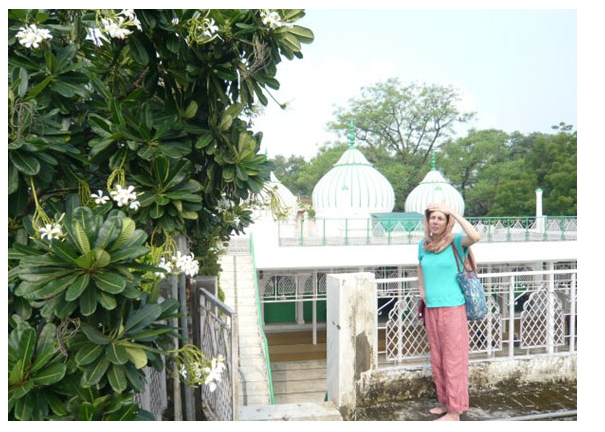
A Mughal mosque
From the metro we looked across at the white facade of the Ambassador Hotel, a fine art deco building we were later to explore, before heading off to “Bagh Wali” mosque; the name means “enclosed in a garden”. No trace of garden remains but the mosque is very fine with bulbous domes (typical of the late Mughal period), painted in stripes. “Just like Moscow,” said one of the walkers.
From late Mughal we fast forwarded to 1930s art deco with just a brief roadside stop near Sujan Singh Park to admire the trees. By September, the distinctive “sausage trees” have shed their purple flowers and are dangling mouse-brown sausage-shaped seed pods over the pavements.
In the thirties
In our ‘trip’ to the ‘30s we learned about architect Walter George who worked with Lutyens and Baker and designed a number of Delhi landmarks including Sujan Singh apartment block, which looks for all the world as if it has flown in from South Wimbledon, where I once lived in an almost identical building.
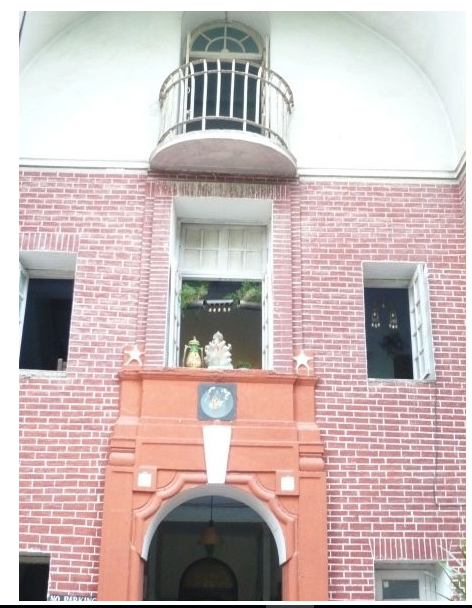
Still focusing on the 1930s, and rather hot and sticky, we entered the cool halls of the Ambassador Hotel. Much of the interior has been modernised but friendly staff showed us original or early features like an old-style ceiling fan, fireplaces, a delightful staircase and tiles, some stunning wooden floors and a magnificent wooden and brass telephone on a stand.
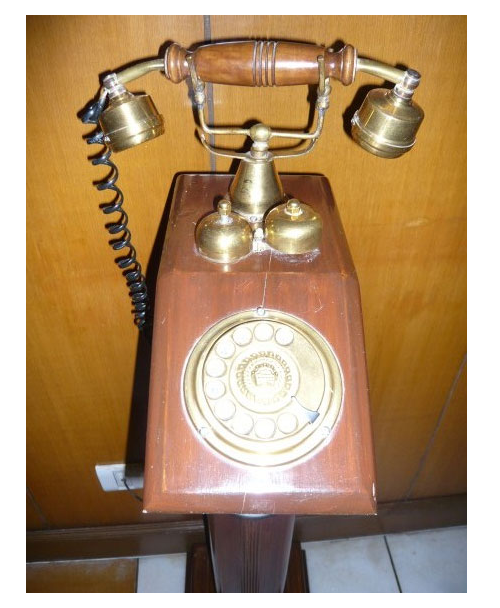
Meeting a remarkable man
From there we made haste for our appointment with Rabbi Ezekiel Isaac Malekar at the Judah Hyam Synagogue, an experience I’ll remember forever. In spite of the fact it was the Sabbath and the Rabbi was fasting, he warmly welcomed us into the synagogue and took enormous pains to explain the Jewish faith and traditions, and the history of the Jewish communities in India. During this time it became clear that he was an extraordinary man with a breadth of vision and generosity of spirit that was truly humbling.
My thought was, here’s a modern Nizamuddin Auliya, rock-solid in his respect for other religions and passionate about inter-faith harmony. In his rabbinical work he has made every possible effort to be inclusive; his is the only synagogue that non-Jews can attend. Encouraged by his daughter, he allows women and men to sit together during services without a screen and very unusually women are allowed to read The Torah.
We saw the beautiful 200 year-old Torah, handwritten on parchment, the ram’s horn, and the special shawl Jewish girls wear at their coming-of age, each thread symbolizing one of the 613 commandments in the Jewish Bible.
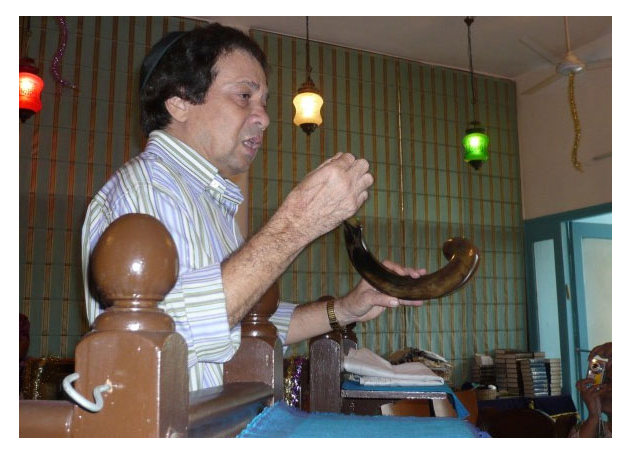
And as we moved into the library, used for any number of local community functions, we found further evidence of the Rabbi’s good deeds. A table in the room is laden with awards for community work. Needless to say he didn’t point them out but it was patently obvious that his contribution to local life is immense.
Musings on mortality
We went on to the peaceful and shady Jewish cemetery – one of the earliest graves being that of Signalman Bernard Pruim of the Indian Army, 1925-1948 – then passed a large and well-kept Christian graveyard before reaching the Parsee burial ground.
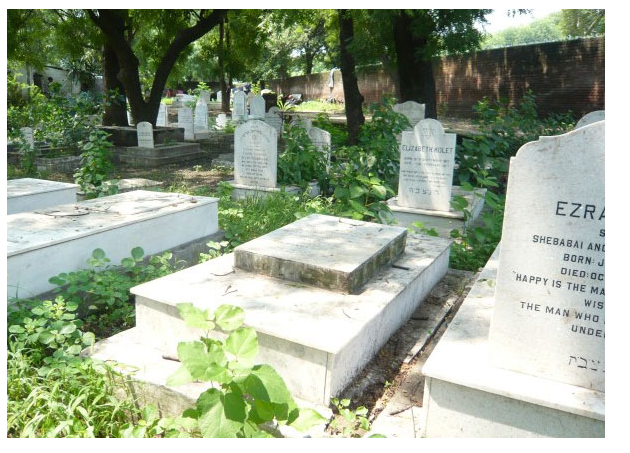
Visiting graveyards has a way of making you conscious of your own mortality so I asked a friend, married to an Indian citizen (as I am), whether she would want to be buried here or go back to Europe. She thought she’d like to go back to her country of birth; I thought I’d stay here but we agreed that I probably wouldn’t be able to get a plot in Delhi.
A Parsee graveyard sounds like a contradiction, but there are no Towers of Silence in this city, and burial is actually a part of Parsee tradition after the vultures have done their job. I found the graveyard a bit melancholy, perhaps because there was little grass (although there were some fine flowers); perhaps because of the line of tiny children’s graves; perhaps because the Rabbi had told us worrying statistics about the decline of the Parsee population and its dwindling fertility and gene pool.
On the lighter side there were some lovely Parsee names on the headstones including ‘Raio N. Postwalla’ and ‘Dinshaw H Framjee’.
And that was it – a fascinating multi-cultural, inter-faith, architectural and historical morning with Surekha in Khan Market without going within 10 feet of a single shop!
This is the perfect tour for a Delhi resident, someone who loves art deco architecture or an expat who’s been here for a while and already explored the classic monuments.
This is a guest blog from Catriona Child. Thankx Cat. For bringing my walk alive.
Heritage walks with Surekha Narain. Contact details, +919811330098,
www.delhimetrowalks.com, surekha@delhimetrowalks.com or walks@delhimetrowalks.com.
Comments & Replies
1. Trudy in the UK: Having just left India, I find the story of Surekha’s ‘Khan Market Walk’, which is beautifully described by Catriona, a reason to hurry back.
I’m not a shopper and was never that interested in Khan market but now I know what I’ve missed.
As with all of Delhi’s hidden treasures you often need a guiding hand to help uncover the mysteries you walk by in the hustle and bustle. I’m jealous of having missed this walk but very happy my eyes have been opened beyond the shop fronts!
DMW: Trudy – we miss you very much indeed and really wish you would come back soon! I would love to take you on this Khan Market Walk and many others!
2. Rashmi in New Delhi: Khan market and no shopping. That was unbelievable till I went around it with Surekha on one of the walks, among hundreds that I have done with her. I’m actually addicted to her walks! I live in Golf Links, which is walking distance from Khan market and when I used to drop my daughter for years to junior modern school, I could never figure out that there is a synagogue on that road till she took us there. Another interesting place was the Mughal era mosque,which I use to see while passing by, but could not make out the Mughal era elements that she explained so nicely to us when she took us inside the mosque, where I would have never gone on my own. As Catriona wrote – visiting a cemetery actually makes you realize that everything, including life, is temporary, which we usually forget. Anyways it’s always good learning and fun to walk with dear Surekha.
DMW: Rashmi – thank you for your kind words. You have been such an eager and faithful companion on my walks over the years and I really appreciate your enthusiasm and support.
3. Gaby in Delhi: “I truly enjoyed reading Catriona’s guest blog on the fascinating surroundings of Khan Market. Most of all, the visit to the Jewish Synagogue brought back fond memories to me and I very much remember the most welcoming Rabbi Ezekiel Isaak Malekar who introduced us to the history of the Jewish communities in Delhi and India. I was fascinated to learn about his efforts to achieve inter-faith harmony and also to know that women were allowed to read The Torah. It was truly special to discover this secluded Synagogue hidden away in the vicinity of the bustling Khan Market area. Surekha, maybe you can organise another visit once again?”
DMW: Gaby – you too have been a faithful and enthusiastic supporter over the years. As well as the passion for the subject, it’s reactions like these that keep me walking round the wonderful heritage of Delhi!
4. Bev. In Delhi: I loved the guest blog on Khan Market! Can’t believe I never knew any of this after 35 years of calling Delhi home. Who knew about the Synagogue and it’s amazing rabbi? Definitely on my list of “must do” walks for whenever this lockdown lifts! Thank you Surekha for opening our eyes to hidden treasures in Delhi.
DMW: Thankx Bev. Yes Delhi has many and diverse hidden gems. For me as always a pleasure to share my passion with like-minded souls like you. Let the lockdown be over first Jorbagh and Khan market too.